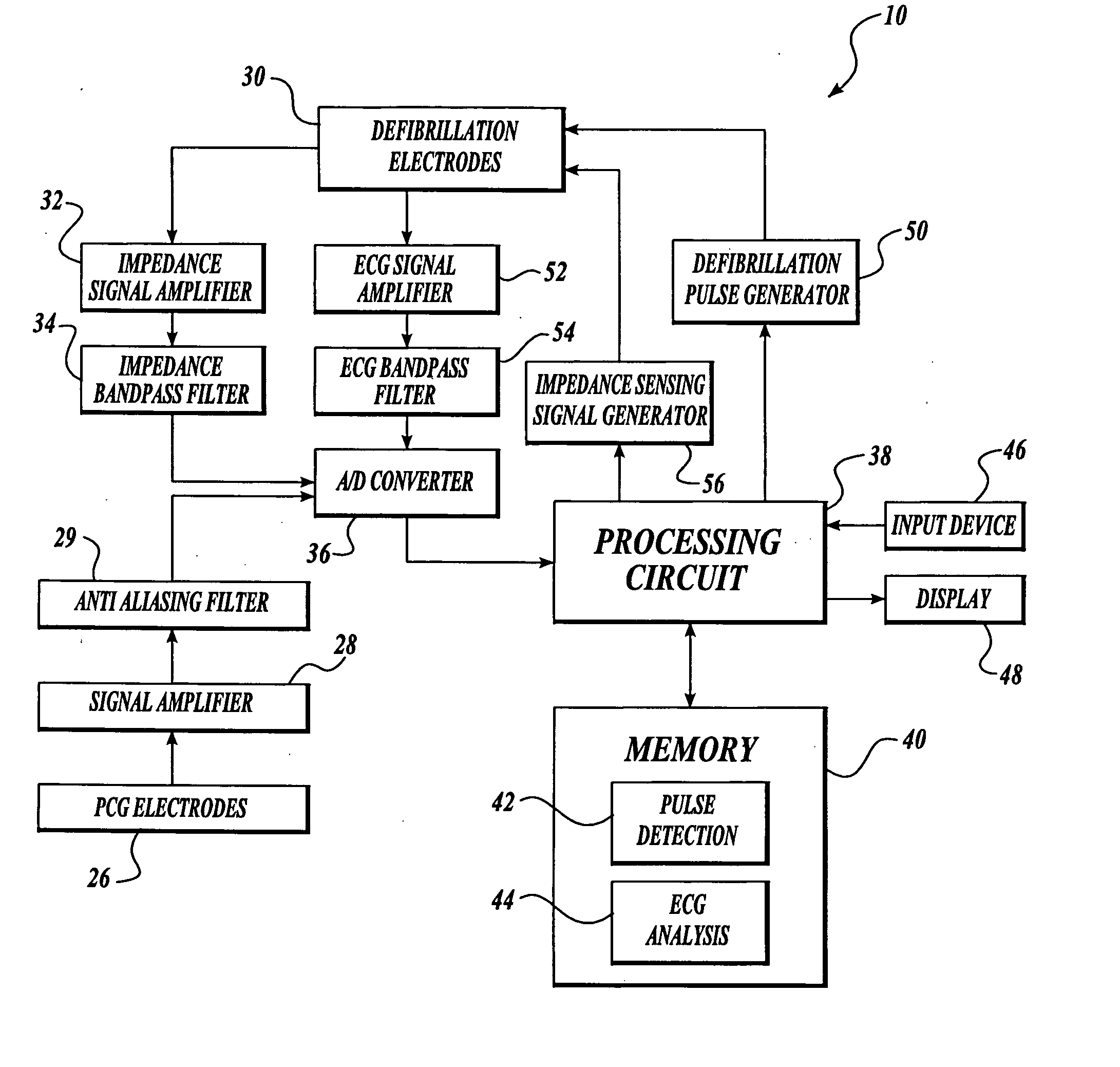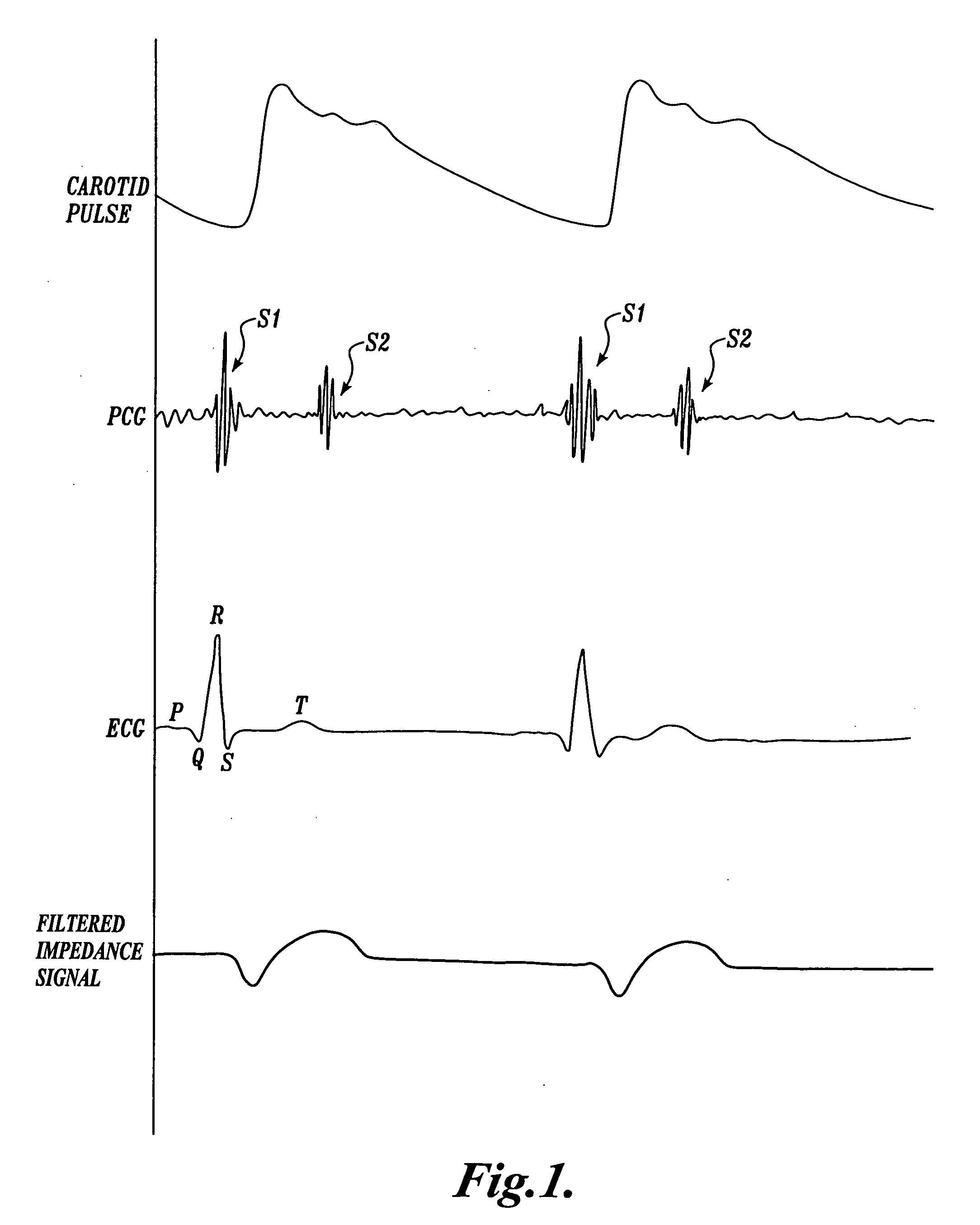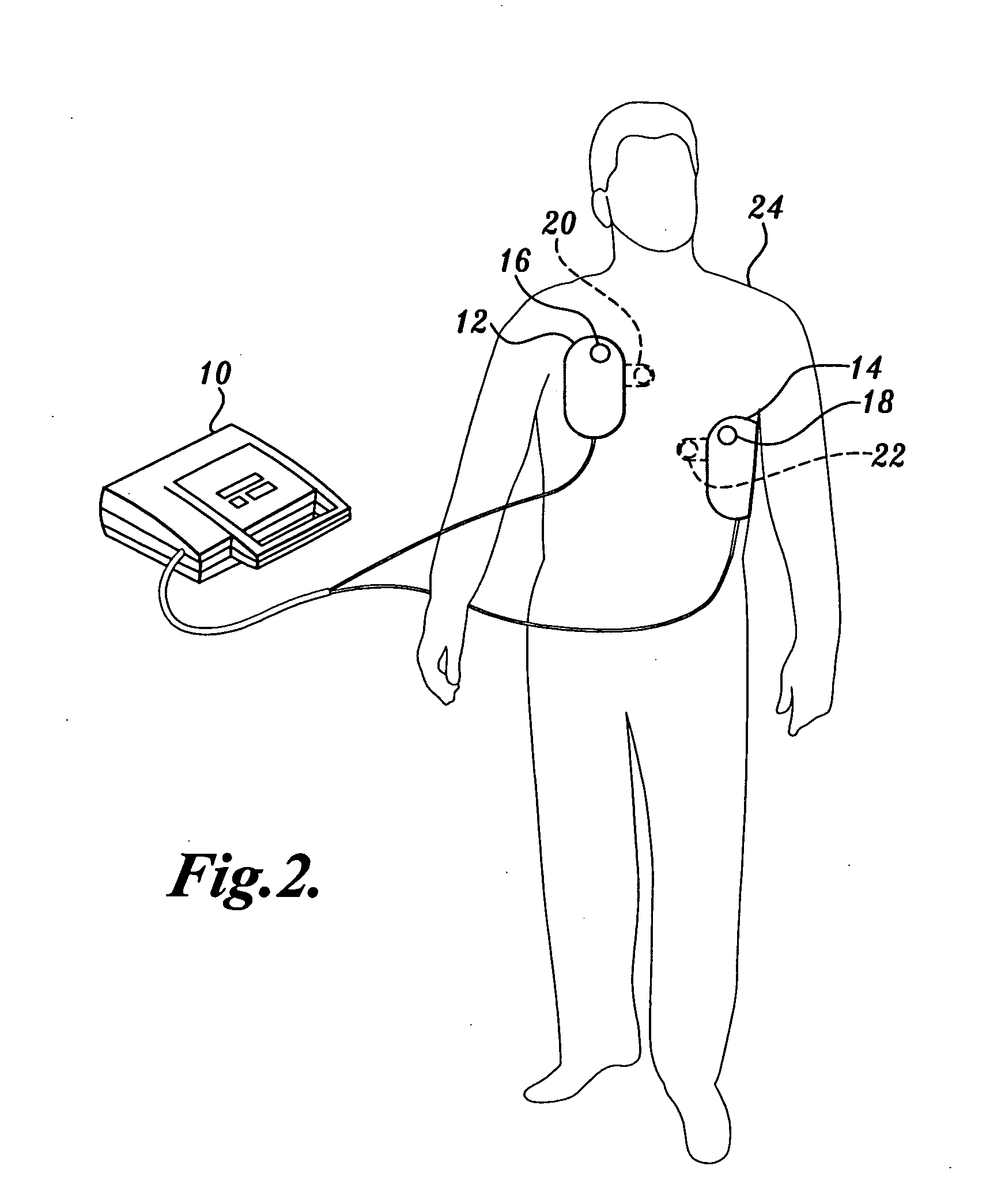Pulse detection apparatus, software, and methods using patient physiological signals
a pulse detection and physiological signal technology, applied in the field of cardiac pulse detection in patients, can solve the problems of cardiac arrest, patient's heart failing to provide enough blood flow to support life, and it is extremely difficult for first-responding caregivers with little or no medical training to consistently and accurately detect cardiac pulses
- Summary
- Abstract
- Description
- Claims
- Application Information
AI Technical Summary
Benefits of technology
Problems solved by technology
Method used
Image
Examples
Embodiment Construction
[0045] The present invention may be implemented in a variety of applications. One particular implementation of the present invention is a defibrillator as illustrated in FIG. 2. In FIG. 2, the defibrillator 10 is shown connected to a patient 24 via defibrillation electrodes 12 and 14 placed on the skin of the patient 24. The defibrillator 10 uses the defibrillation electrodes 12 and 14 to deliver defibrillation pulses to the patient 24. The defibrillator 10 may also use the electrodes 12 and 14 to obtain ECG signals from the patient 24.
[0046]FIG. 2 further illustrates sensing devices 16 and 18 placed on the patient 24. The sensing devices 16 and 18 are configured to detect a physiological signal in the patient, such as acoustical energy from heart sounds produced in the patient 24 or electrical energy that reflects a patient characteristic such as transthoracic impedance. In one exemplary embodiment discussed herein, the sensing devices 16 and 18 are configured to detect acoustical...
PUM
 Login to View More
Login to View More Abstract
Description
Claims
Application Information
 Login to View More
Login to View More - R&D
- Intellectual Property
- Life Sciences
- Materials
- Tech Scout
- Unparalleled Data Quality
- Higher Quality Content
- 60% Fewer Hallucinations
Browse by: Latest US Patents, China's latest patents, Technical Efficacy Thesaurus, Application Domain, Technology Topic, Popular Technical Reports.
© 2025 PatSnap. All rights reserved.Legal|Privacy policy|Modern Slavery Act Transparency Statement|Sitemap|About US| Contact US: help@patsnap.com



